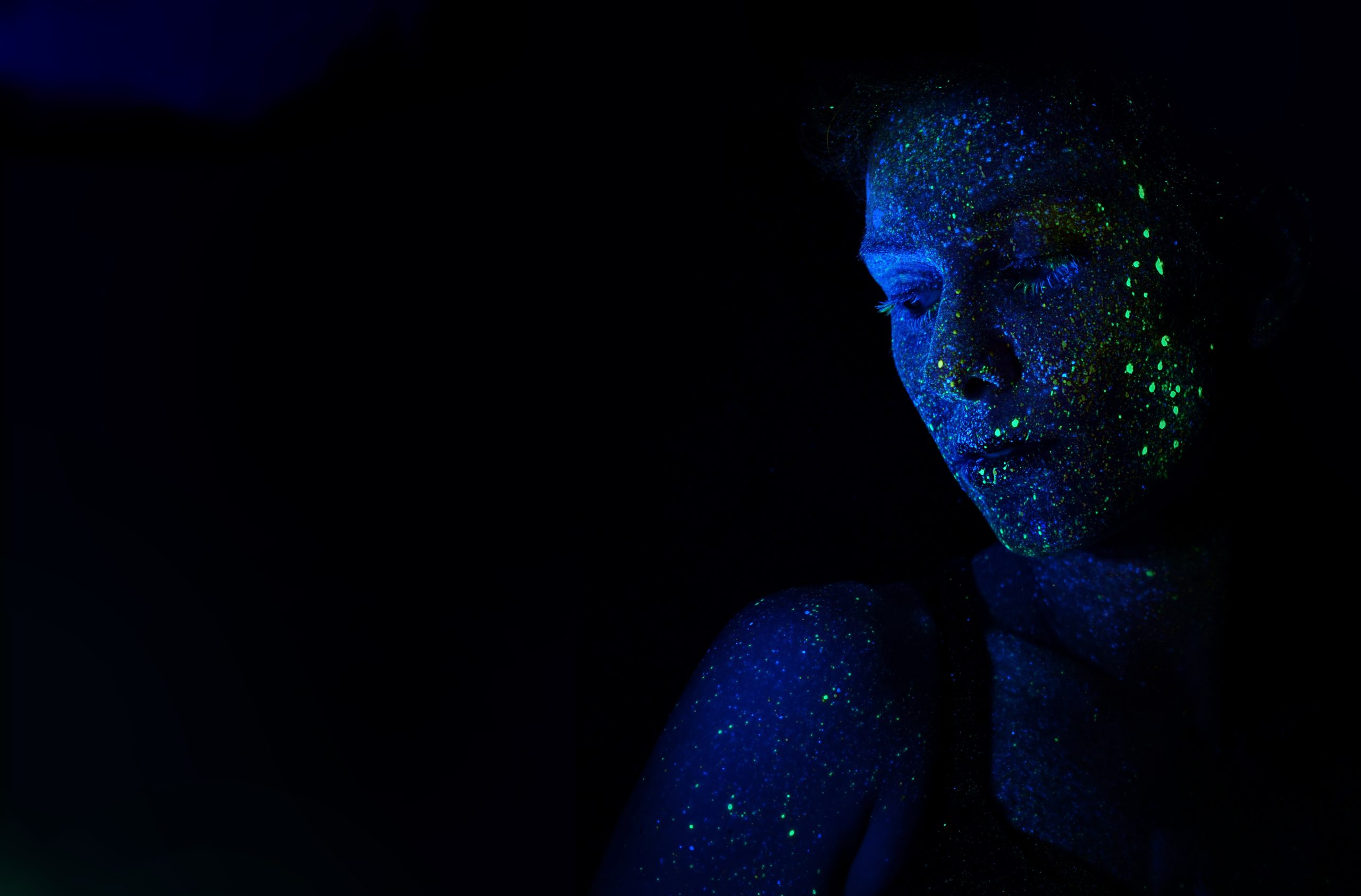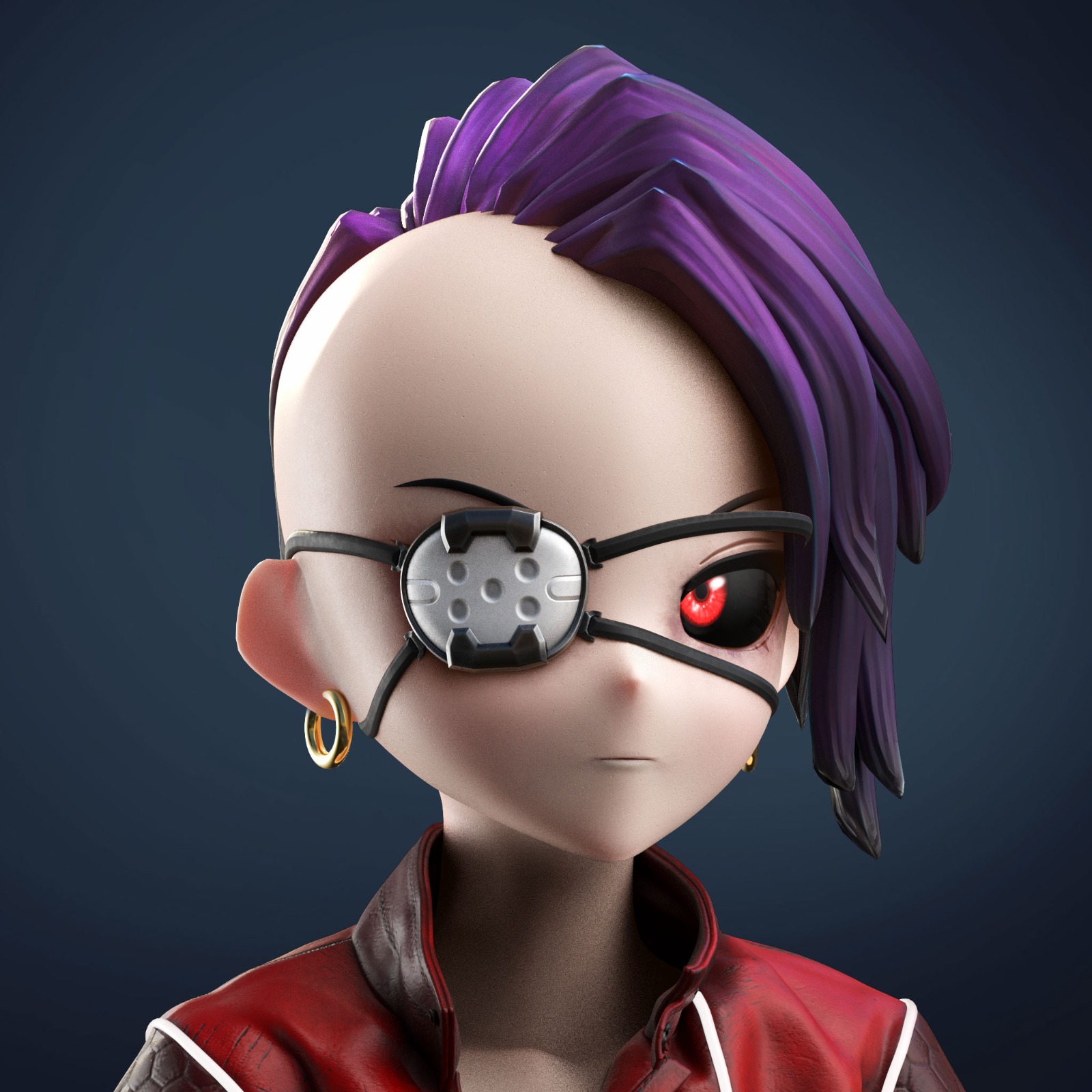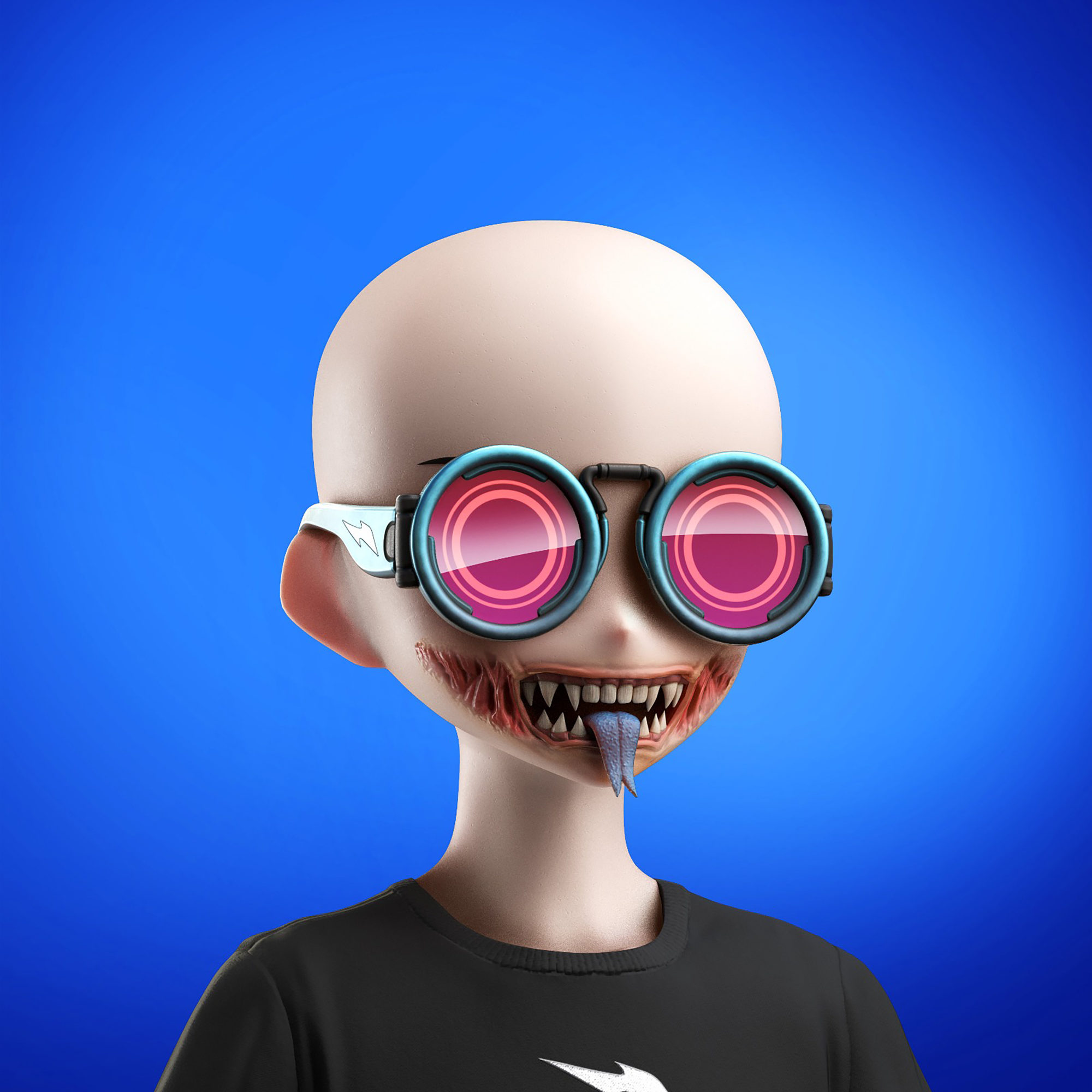
Avatars are influencers now
Touted as a series of connected digital worlds in which we will shop, play, work, and socialize, the forthcoming metaverse will be a place where we express ourselves via digital avatars. Already, people are buying and selling digital art, music, and fashion in the form of non-fungible tokens (NFTs) for hundreds of thousands of dollars a pop.
Now, 3D digital startup Daz 3D (sister company to NFT and avatar company Tafi) and Nike-owned RTKFT (best known for its funky, hot NFT sneakers) are teaming up to put Utah on the map in this burgeoning digital world. The collaboration will allow anyone to build and dress 3D digital avatars that can be used in social media, video games, and NFTs. The idea? Build an ecosystem of avatars that people will rely on when they visit different virtual worlds in the future.
Here’s how it works: RTFKT created CloneX, a series of anime-inspired 3D humanoids—which look more like Pixar cartoons—that owners can dress, design, and use to represent themselves while inside the online gaming platform Roblox, as well as in social media posts and virtual reality chats.
CloneX is the first in a broad ecosystem of avatars that the company will offer. The initial drop included 20,000 avatar NFTs for sale. At least 10,000 of them were made available first to people who have previously purchased RTFKT’s NFTs, and then a second batch of 10,000 of them were made available to the public in November for 3 ETH each on the Ethereum blockchain in a Dutch auction.
Despite a controversial launch in which RTFKT got hacked, the company sold $95 million worth of NFTs in less than five hours.
While it may seem obscure to the general public, artists and designers in the NFT space eagerly anticipated CloneX—making it perhaps one of the hottest NFTs to date. RTFKT collaborated with famed Japanese artist Takashi Murakami, who has worked with Kanye West, Louis Vuitton, and others. Users can export the CloneX avatars to gaming engines, animations, social media posts, and even AR filters in video conferencing—such as Google Meets—for interactive experiences.

A unique feature about this particular NFT is that anything a user’s avatar wears—sunglasses, jackets, shoes, clothing, or hats, for instance—can be purchased as a one-of-a-kind physical version to be worn in the real world, too. A user could, for example, wear the same jacket in real life that their avatar wears to a digital concert in the metaverse.
Another unusual detail of this project is that buyers of CloneX NFTs didn’t know what their avatars looked like until Dec. 12, when they could activate what looked like a digital vial of DNA strands on RTFKT. Then they’d see if their digital CloneX humanoid was an anime elf, for instance, or a muscle goon. Either way, it would be a surprise. “It’s like opening a pack of Pokémon cards. You don’t know what you’re going to get,” says Chris Le, co-founder of RTFKT.
This is where Daz 3D comes in. If you own a CloneX, you can use it to create content in Daz Studio, which has software tools with extra assets. Daz’s free software tools allow users to adjust the avatar’s body size and shape, pose it, customize its skin tone, background, hair, and other features, and then apply digital clothes that automatically adjust to the size and shape of the avatar’s body.
A number of actors and celebrities—including Los Angeles Rams wide receiver Odell Beckham Jr.—purchased the CloneX NFTs during the November drop, and Le expects “they will be making cool stuff with them on Daz.”
Because each NFT carries an unchangeable digital contract, designers—like RTFKT and any other creator who made a digital dress or a particular hairstyle added to the clone—will get a royalty slice each time that avatar is resold on the blockchain. Daz will also profit by eventually selling digital clothes for CloneX avatars and collaborating with RTFKT on new clone NFTs.
“Daz makes it easy for anyone new at 3D to come in and start making free content,” Le says. “And supporting the creator economy is in both of our companies’ DNA.”
So how exactly did Le’s RTFKT become such a big name in the NFT and 3D space—so much that celebrities pay gobs for these NFTs? Le grew up in Salt Lake City, making graphic designs for record labels. He then began making skins for avatars in video games like Counter-Strike, but when the pandemic hit and the vast majority of the world shifted to work and play online, things really heated up.
RTFKT exploded onto the NFT scene in 2020 when it introduced a pair of digital sneakers that sold for 30 Ether—the equivalent of $90,000—setting a record for the highest-paid digital fashion item. In April of 2020, the startup sold 600 NFTs of sneakers and sold out in just seven minutes, reaching a total revenue of $3.2 million.
Big names came calling: Elon Musk bought a pair of the $90,000 cybershoes, and Andreesen Horowitz recently led an $8.2 million investment round in RTFKT, along with Instagram influencer Gary Vaynerchuk, early SpaceX investor Bill Lee, EDM pop band The Chainsmokers, and C-Ventures, founded by Adrian Cheng, part of China’s wealthiest family. Because the blockchain governs NFTs, RTFKT gets a royalty each time a digital item it makes is resold in digital markets.
In December, Nike bought the company for an undisclosed amount. Now, RTFKT is taking a more aggressive approach to drive the foundation for the metaverse with its portable CloneX drops. RTFKT’s push to innovate attracted Daz 3D to connect with RTFKT.
In the past year, Daz’s sister company Tafi emerged at the forefront of the fast-changing industry of NFTs and digital avatars. Tafi recently designed an NFT collectible for Coca-Cola and is creating AR avatars for Samsung phones and digital clothing for brands like Champion and Warner Bros.
“With CloneX, RTFKT is pushing the NFT trend forward with creativity and innovation,” says James Thornton, CEO of Daz 3D and Tafi. “Its vision aligns perfectly with ours.”

Le says he grew up playing around with Daz 3D studio, which was started 21 years ago by Utah entrepreneur Dan Farr. The software tools on Daz Studio are free, and the Daz marketplace has 11,000 creators who sell their designs—whether they be clothing, skin tones, or facial features—in the creator marketplace. “Daz has always been the pioneer of human avatars,” Le says.
In fact, 3D design was first invented at the University of Utah in the 1970s by Edwin Catmull, who went on to start Pixar. A long string of other U of U computer graphic graduates started Silicon Graphics, Adobe, and Evans & Sutherland. Utah native Nolan Bushnell created Atari in 1972 and was later named one of the “50 Men Who Changed America” by Newsweek Magazine for his role in launching the video game industry.
Fast forward 50 years and Utah’s tech industry has exploded to comprise 6,700 companies, 302,000 jobs, and a growing number of unicorns. But most of the action has been in the software as a service (SaaS) sector.
RTFKT and Daz want to change that, creating digital tools and a foundation for the creator economy. “We have to go back to our roots,” Le says. “I feel like it’s our duty to continue the torch of 3D and, especially with the new movement of the metaverse, it’s the perfect opportunity to continue it into that realm.”
Already, Daz 3D has been helping to create some of today’s most popular digital fashion models and synthetic influencers, or “humanoids.” And yes, there are virtual avatars that are cooler, more beautiful, and making more money than the rest of us.
There’s FN Meka, a digital TikTok influencer and robot rapper with 10 million followers. There’s Lil Miquela, a synthetic character owned by Vancouver-based Dapper Labs, who has 3.1 million Instagram followers and is a top-earning model for Calvin Klein, Chanel, and Prada. She created a music video for Lollapalooza’s online festival and earned $11.7 million last year. There’s also Bermuda, a rule-breaking bad-girl model influencer, and Blawko, who likes fast cars, Absolut vodka, and is never without his trademark scarf covering his nose and mouth.
Daz 3D tools also helped 3D designer Cameron-James Wilson give birth to Shudu, a lithe, Black model who has become the top virtual model hired by Hyundai, Glamour, and Lexus. Wilson, a former fashion photographer, got into 3D design and virtual models a decade ago. As founder of The Diigitals, the first digital modeling agency, Wilson has created thousands of characters and “digital models” with Daz 3D for companies like Mercedes-Benz, Coca-Cola, Samsung, and Vogue. In the future, The Diigitals will use Daz to create more animations, strand-based hair textures, and dresses with realistic-looking sequins and furs.
“The Daz platform is so accessible for people. You can buy different clothes and add-ons, such as skin tones and strands of hair,” Wilson says. “Anything RTFKT does is something to watch because they’re a huge player within the NFT marketplace. Anything they do is generally something big.”
Le believes that by withdrawing into the metaverse for our work, entertainment, and social interactions, we’ll be saving the earth. You won’t need to buy a big-screen TV because you’ll watch TV on a huge screen in the virtual metaverse, and you’ll wear digital clothes that don’t require water or chemicals to produce.
“All of this will take place in the metaverse, which will unclutter the real world,” Le says. “We’ll have a clean, breathing planet again.”
Plenty of others believe in and are driving this future, too. Facebook, Microsoft, Nvidia, Snap, Tencent, Epic Games, Roblox, Apple, and Amazon are all developing metaverse strategies and products. Digital models are raking in cash from big brands. Companies like Champion, Gucci, and Coca-Cola are clamoring to develop clothing and collectible NFTs.
Nonetheless, most Americans don’t know what the metaverse is, and the majority aren’t interested in it, according to a poll of 873 people by YouGov. Le says that’s the same mindset people may have had in 1993 before the internet and e-commerce.
“It’s like we’re going through the same phase from the 1990s,” Le says. “It only makes sense that this is the next step of the internet. It’s here. Now, it’s about mainstream adoption.”







